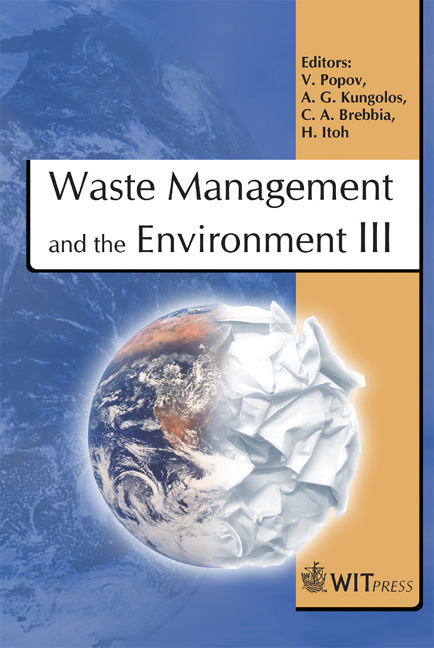Effective Utilization Of Waste: Development Of CH4 Dry Reforming Catalysts From Spent Nickel Metal Hydride Battery For Resource Recovery
Price
Free (open access)
Transaction
Volume
92
Pages
8
Published
2006
Size
418 kb
Paper DOI
10.2495/WM060241
Copyright
WIT Press
Author(s)
T. Kanamori, R. Hayashi, M. Matsuda & M. Miyake
Abstract
The resource recovery of nickel metal from the spent nickel metal hydride (Ni- MH) battery was investigated by using the CH4 dry reforming, aiming at reusing it as a raw material of the Ni-MH battery. From the results, a compound identified as a single phase of NiO by XRD was successfully prepared from the spent Ni-MH battery by a series of chemical processes using HCl and NH3 aq. solutions followed by calcinations. The resulting NiO exhibited excellent CH4 conversion in the CH4 dry reforming, i.e., the CH4 conversion higher than 96% continued for 50 h when the flow rates of injection gases were controlled at CH4/CO2/Ar = 10:10:80 ml·min-1. Although the XRD pattern revealed the reduction of NiO to Ni0 and the deposition of carbon after the CH4 dry reforming, the deposition of carbon could be suppressed by changing the injection gas ratio. The resource recovery of nickel metal was, therefore, concluded to be possible through the CH4 dry reforming over NiO prepared from the spent Ni-MH battery. Keywords: resource recovery, nickel metal hydride secondary battery, nickel metal, CH4 dry reforming, nickel-based catalyst. 1 Introduction Resource recovery of waste is one of important subjects for sustainable development. Technological development of resource recovery has, however, fallen behind, compared with that of creation of high functional materials using pure raw materials. In the battery field, nickel metal hydride (Ni-MH) batteries
Keywords
resource recovery, nickel metal hydride secondary battery, nickel metal, CH4 dry reforming, nickel-based catalyst.





